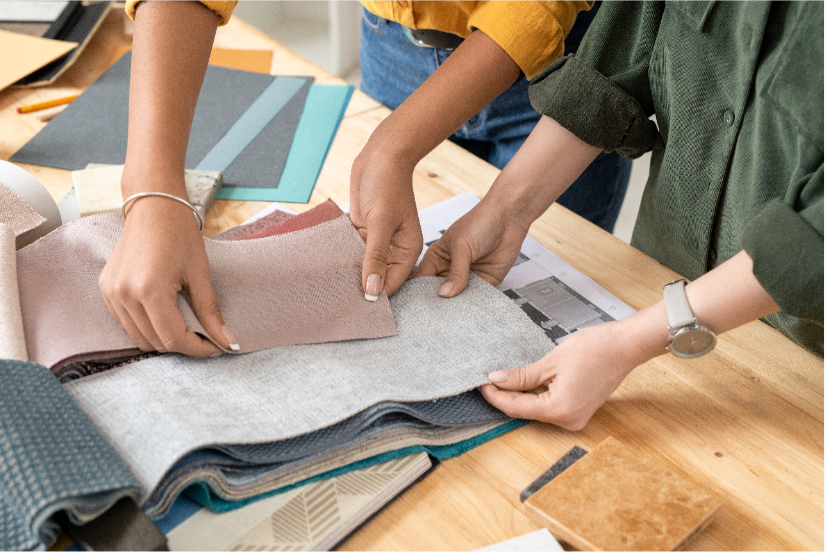Table of Contents
Modal fabric factory said when you open the shopping platform and want to buy a set of personal clothes, do you find that most of the goods you search have the word “modal”?
In life, in addition to various personal clothes, the categories related to it also include other household items, such as bed sheets, towels and handkerchiefs.
Overview of modal fabrics
Modal fabric factory said Consumers will be confused by the word “modal” marked by merchants. What kind of fabric is it?
Generally speaking, fabrics are made of natural or man-made fibers.
The fibers obtained from driven plants and minerals belong to natural fibers, including cotton, hemp, silk, wool, bamboo fiber and glass, which we often hear.
Fibers made of nylon, polyester, acrylic acid and other chemicals are considered synthetic fibers.
Modal fabric factory said the fiber used to make modal is extracted from beech pulp. However, these fibers need to undergo some environmental protection processes for chemical treatment before they can be used.
It is a semi synthetic, super soft material mixed with spandex and cotton for clothing.

The development history of modal
Modal fabrics were first produced in Japan and soon began to be produced in most Asian countries.
Today, China and India are still major exporters of modal fabrics.
During production, beech trees are first cut into pieces and transferred to the production workshop.
After purification, these fragments can be made into cellulose, which is the basic raw material. The remaining tree products will be discarded.
Modal fabric factory said the obtained cellulose was made into thin sheets, and then immersed in a large amount of sodium hydroxide for soaking.
After soaking, these flakes will be broken down into debris.
The debris is further immersed in carbon disulfide. At this stage, a substance called cellulose sodium xanthate is added to turn the white debris into orange.
At this point, tree derived cellulose is no longer an organic material.
After that, the cellulose is immersed in sodium hydroxide again to produce a syrup like solution. Next, they are immediately forced through a spinneret to produce fibers.
Modal fabric factory said the fibers are then soaked in sulfuric acid and stretched into yarn.
The resulting yarn is loaded into the spool after washing, bleaching, rinsing and drying. They are then modeled into the fabric.
The difference between modal and other fabrics
Modal fabric is basically a kind of rayon. Although many other fabrics also belong to the rayon family, there is only one type of modal fabric.
It is highly similar to other rayon varieties, so it must be distinguished. Examples similar to modal fabrics are viscose and Lyocell.
Viscose is the pioneer of modern fabrics. Only after the production of viscose rayon, all other fabrics entered the market.
At this time, it becomes easier to produce fabrics with simpler formulas and methods.
Modal fabric factory said the main difference lies in the production method. Viscose rayon production process involves many chemicals, so it is not particularly environmentally friendly.
On the other hand, lessel is the only pure organic rayon on the market.
Unlike modal fabrics, lessel will not have any chemical changes in the production process.
It follows a closed-loop solvent system and therefore does not dump chemicals into the environment.
Cost of modal fabric
Usually, when selecting fabrics, we will first pay attention to its physical properties and cost.
Modal fabric is cheaper than silk, but slightly more expensive than viscose rayon, roughly equivalent to the cost of cotton and lessel.
The cost of modal fabric depends on the production method.
Fabrics produced in a more sustainable way are obviously too expensive, so manufacturers may reduce some steps to reduce costs.
Only in terms of physical properties, modal fabric is highly durable. It is also heat-resistant and is a good breathable material.
In fact, the water absorption of modal fabric is 50% higher than that of cotton, and it will not trap sweat and odor.
Therefore, it is most suitable for casual wear, such as yoga pants and underwear.
The mixed spandex provides the necessary elastic elements to maintain its shape and finish even after repeated washing.
Modal fabric factory said modal not only has all the characteristics of cotton, but also has many characteristics that cotton does not have, including shrinkage resistance and color fading reduction.
Modal fabric factory said although modal fabric claims to be environmentally friendly, it still has some harmful effects on the environment.
Carbon disulfide used in the manufacturing process may damage the kidney or liver, and may even lead to coma and even death!
Although some factories will install chemical scrubbers and absorption devices to reduce this emission, it is undeniable that only the cellulose of trees is used in production and the rest is discarded, which still causes a lot of waste.



